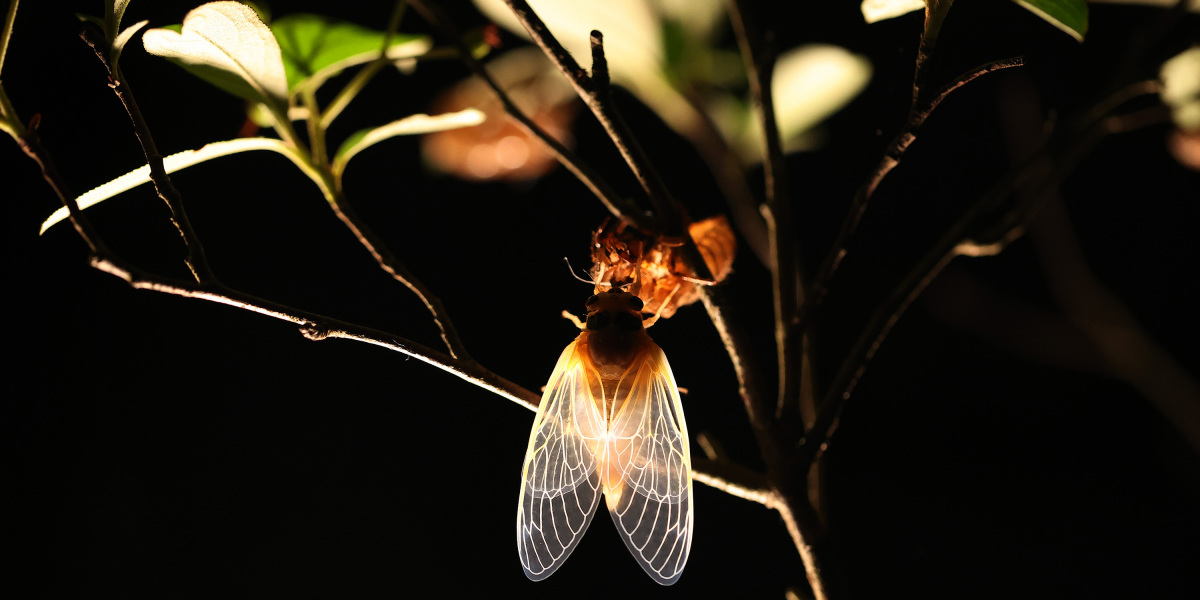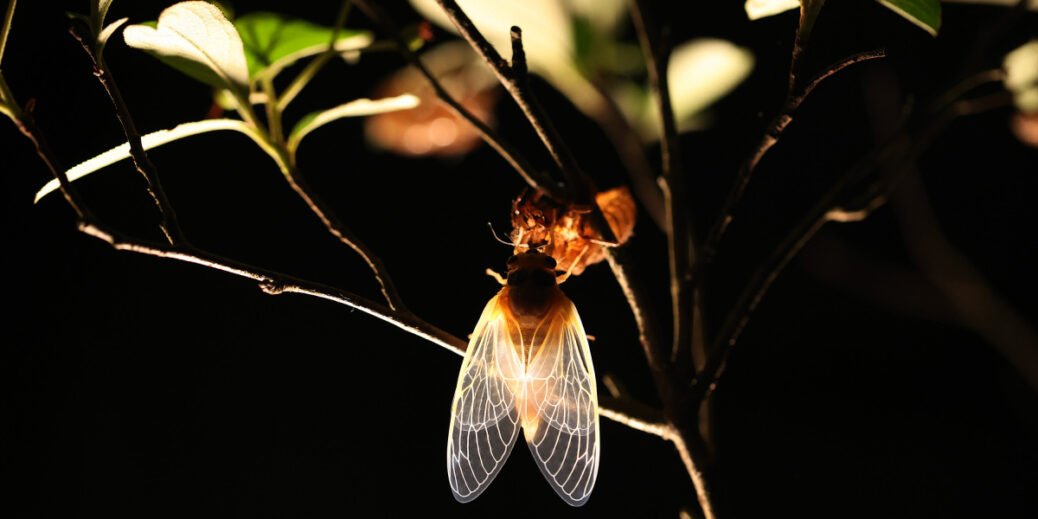
A few weeks ago, Michelle Watson woke up to a deafening, steadily oscillating screech. “What the heck is that noise?” she wondered.
She went outside to her yard and saw hundreds of beady-eyed insects enrobed in a thick shell of gold emerging out of the ground and crawling up the trees. What Watson was seeing was the emergence of thousands of Brood X cicadas, part of a billions-strong insect swarm that has lain dormant for 17 years before arising to “scream,” mate— all over about three thunderous weeks.
Watson had spent the past 20 years in Las Vegas, but moved to the Blue Ridge Mountains in Georgia last year. She’d seen social media posts about the cicadas, which emerge once in a generation across a huge swath of the eastern United States, but figured they were just the usual summer bugs that she’d heard her entire life. “I thought, ‘What’s the big deal?’” she says.
Faced with an onslaught of bizarre creatures, though, she suddenly understood what the big deal was—and did what any modern human would do: She Googled it. Within minutes, she had downloaded Cicada Safari, a cicada-tracking app.
“We’re getting 16,000 photos a day, and at this rate, we are very likely to get half a million observations.”
Apps like iNaturalist, PictureThis, and PlantIn have become popular respites from the pandemic. Many of these apps act as a digital resource, and allow users to submit photos and video for scientific study. Their success inspired Cicada Safari’s creator Gene Kritsky, an entomologist and biology professor at Mount St. Joseph University, to create his own service as a way of tracking Brood X.
Crowdsourcing has long been a way of gathering information for an event that only happens once in a generation, says Kritsky. Researchers in 1858 wrote to newspaper editors urging them to get readers to write in with observations, while postcards were popular in the first half of the 20th century. By the late 1980s, Kritsky was using a telephone hotline that would often get so drowned in tips that the tape on his voicemail machine would get jammed. In 2004, during the last emergence of Brood X, he urged people to send in observations via email with photos attached. He received about 1,000.
Cicada Safari app allows users to track sightings of cicadas on a map, as well as take photos of insects they spot and submit them to the app. And it is riding a wave, with nearly 180,000 downloads as of publication — not bad for a piece of software that most people won’t use beyond the three-week lifespan of the insects.





Recent Comments